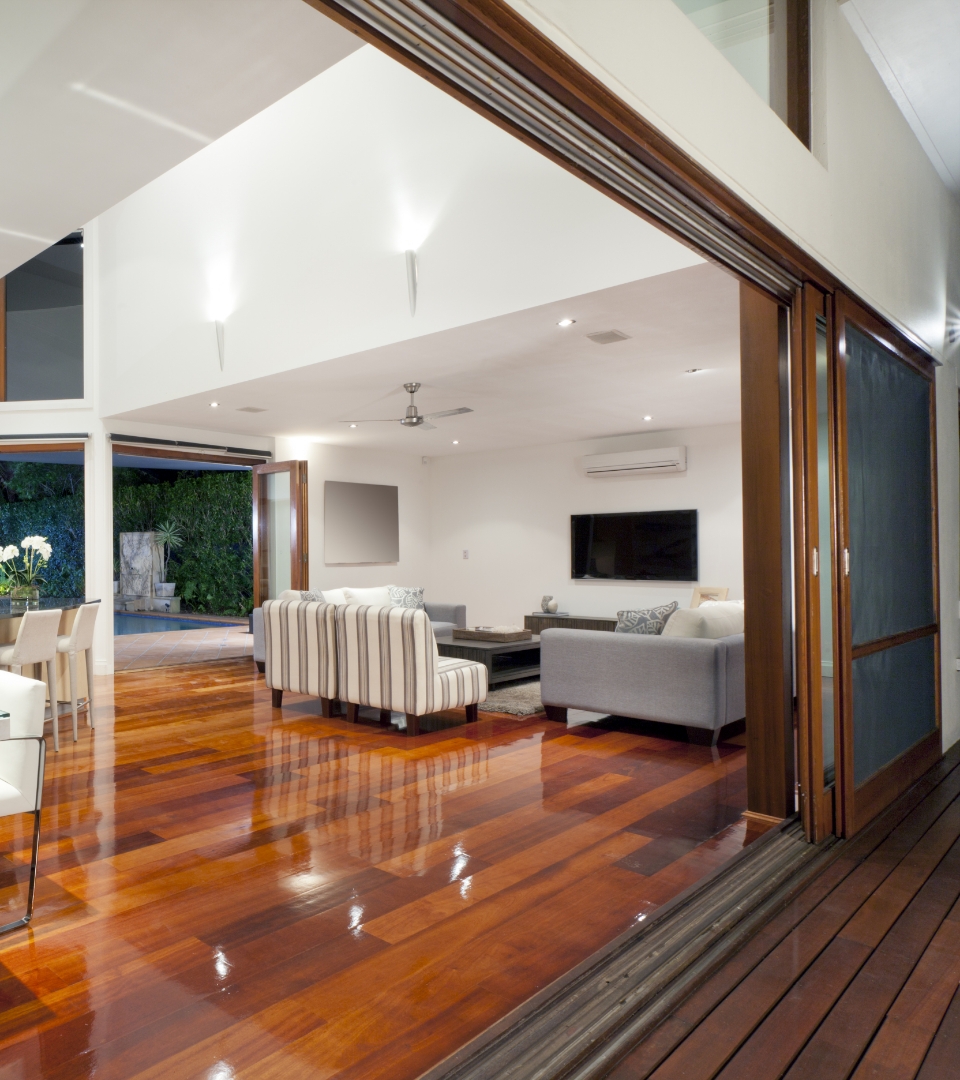Cleartherm Glass Sealed Units was established in 1988. Back then, five employees manually produced 400 sealed units per week. Our reputation for quality and reliability grew steadily and by 2003 we had twelve employees producing 1,400 sealed units a week. Today, our well-trained and experienced workforce produces over 4,000 units per week from our 15,000 sq. ft. Leicestershire headquarters.
Search Results for: sealed units
Premier Double Glazed Units Ltd
Double Glazed sealed units made for the trade
Energy Efficient Glazing: A Useful Guide
In any property heat will be lost through windows and doors, however this heat loss can be reduced when a home has energy efficient double or triple glazing.
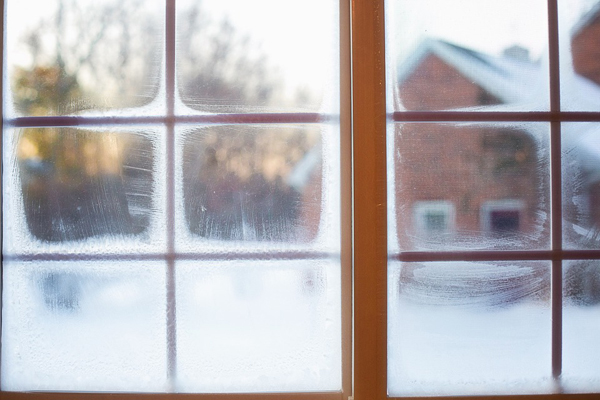
Energy efficient glazing helps keep heat inside the home and, in combination with other home energy efficiency measures (such as cavity wall insulation, loft insulation and an energy-efficient heating system), can lead to a reduction in annual heating bills.
And that’s just the start. The benefits of having energy efficient glazing installed in your home can also include a reduced carbon footprint, improved home security and noise reduction.
If you’re considering investing in energy-efficient glazing, you’re certainly not alone. There’s a lot to gain from this home improvement, but of course there is also a lot to consider.
This short guide will take you through some key information that will help you make an informed decision.
What is energy efficient glazing?
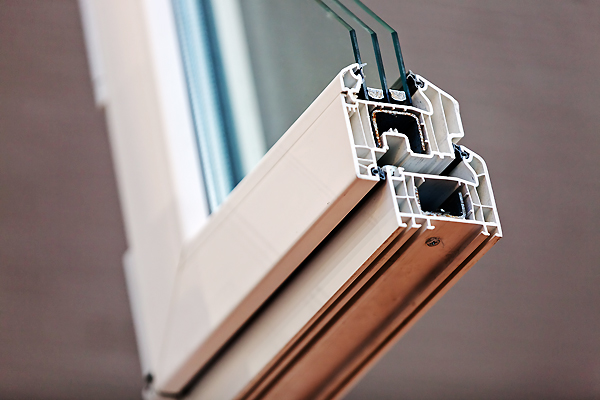
Energy-efficient glazing is the term used to describe glazing consisting of two or more glass panes within a sealed unit. This includes double and triple glazed windows and similar units found within doors.
Energy-efficient windows and doors consist of a framing material (timber, aluminium, PVC-U or composite) into which one or more glass sealed units are fitted according to the style of the window or door.
Energy-efficient glazing is rated according to its ability to reduce the amount of heat that can pass through the window, the capacity for sunlight to travel through the glass unit, and the capacity for air to move through the unit.
Commonly, the highest-rated glazing according to efficiency is made with Low-Emissivity Glass which has a special coating on the inner surface of one pane, enabling light to travel through whilst reflecting heat back into the room.
What is in between the glass panes of a sealed unit?
The air gap limits the amount of cold air able to get into your home. It does this by acting as an insulator and is completely sealed.
The space between the glass panes is filled with air or gas such as argon, krypton or xenon. These help reduce heat loss through the unit. When gas such as argon – which has low conductivity – is used within this space, the window is then even more efficient at keeping heat inside the property and also at interfering with sound waves from inside or outside the house, reducing noise pollution.
Sealed units also have a strip in between the panes, made from metal or polymer. This strip is called a spacer which can contain a drying agent that deals with any moisture that is trapped in the space between the sheets of glass.
The type of frame material used
As with the glass itself, the frame material used in energy-efficient windows and doors is also important.
There are several options here:
- PVC-U has many benefits including performance longevity (usually 20 years or more) and is recyclable.
- Wooden frames are environmentally friendly and are often specified for properties where the use of original materials is necessary, such as those within a conservation area.
- Aluminium frames are an eco-friendly, modern choice because the creation of the material is low impact, recyclable and the slim look of the frames is desirable.
- Composite frames are composed of a combination of wood and aluminium or plastic.
Energy rating and u-values
For ease of purchase, certain window manufacturers label the energy efficiency of their windows with an energy rating ranging from A++ to C, A++ being the most efficient. This rating system has been developed by the British Fenestration Rating Council (BFRC) and it takes into consideration the entire window.
When this energy rating is given, a whole window u-value is also calculated. The u-value refers to how easily heat can pass through the unit. The u-value scale works in the opposite way to an energy rating, in that the higher the u-value, the more easily heat can pass through the window and the window is less efficient.
The benefits of energy-efficient glazing
There are many benefits of EEG, which are increasing all the time as technology and building techniques advance, and our eco-awareness increases.
Key benefits include:
- Improved energy efficiency: Energy-efficient glazing may form part of a wider range of energy-saving measures. If your home also contains cavity wall insulation, loft insulation and an energy-efficient heating system, these can all work together to reduce the amount of energy needed to heat your home. As a consequence, you can enjoy lower energy bills and a reduced carbon footprint.
- Reduced noise pollution: Sealed double and triple glazing can be effective at reducing medium to high-frequency noise, creating a more comfortable, private and peaceful home environment.
See more: Glazing and noise reduction in homes
- Improved thermal insulation: Energy efficient glazing can help to keep your home warmer in winter and cooler in summer. The air or gas gap between the panes of glass in a sealed unit provides an extra layer of insulation. This increased thermal resistance reduces the amount of heat that can escape the home during the colder months. In summer the reverse occurs, and the windows help keep the heat outside, keeping the home cooler.
- Reduced condensation: Energy efficient windows and doors help reduce the risk of condensation which occurs when a cold surface and moist air meet. The resulting moisture can potentially damage the window frame and if it is particularly bad, may even affect other areas of the room.
See more: How double or triple glazing helps reduce condensation
- Safety and security: As there are two or more panes instead of one, energy-efficient glazed windows offer a more secure barrier against unwanted entry than a single glazed window. The level of security can be enhanced further when laminated glass is used.
- Cost savings: Assuming all other measures have been taken, Installing energy-efficient windows can save you money over the long term by reducing the amount of energy required to heat your home.The savings you gain from energy-efficient glazing will depend on a number of factors, including the size of the home, the type of windows you purchase and your energy supplier. For an indication of the potential savings, you could enjoy based on your home and windows.
- A more comfortable living environment: Lower heat loss, plus reduced noise, helps toward a feeling of a much more comfortable home.
- Increased home value: Making energy-saving improvements to your home has the potential to boost its value. Potential homebuyers are increasingly aware of the eco-credentials of any house they consider purchasing. According to a report conducted by the Government based on property sales made between 1995 and 2011, a homeowner making energy-saving improvements to their home could see a 14-38% increase in value as a result.
A note on the importance of ventilation
In newer dwellings with higher-efficiency insulation, a lack of adequate ventilation can increase the risk of condensation forming on internal surfaces – including on windows and other glazed surfaces. A way of reducing this risk is to ensure each room has adequate ventilation, such as trickle ventilators or other forms of ventilation.
Continuous improvements in frames, glass and gas combinations mean the consumer’s energy-efficient window choice is increasing all the time. Energy-efficient glazing is a beneficial addition to any modern
When to repair or replace your windows
Repairing or replacing windows – there’s a lot to consider, including the benefits of upgrading to energy efficient glazing. Here’s some advice to help you decide.
The decision about whether to repair or replace windows can be challenging. Just like any home improvement, it is important to think about costs and potential savings in the short term as well as over a longer period.
This is especially pertinent for glazing in the home because upgrading to windows with a higher energy efficiency rating has the potential to reduce your annual household energy use.
So when considering window repair or replacement it can be helpful to bear in mind the potential savings you could gain by installing windows with a higher level of energy efficiency.
Window maintenance and identifying problems
The importance of properly maintaining the windows in your home cannot be overstated. That’s because in addition to potentially affecting the value of your property, the condition of your windows can have a significant effect on both how comfortable your home is to live in and how much energy is required to heat and cool your living areas.
To help identify problems with your windows and the best course of action to take, we have provided some expert guidance in four easy steps.
Step 1: Visually inspect both sides of the windows
Inspect your windows for any evidence of rot (timber windows) or other damage to the hinges or jambs (the vertical parts that form the side of a window frame). Check if any of the seals are damaged, and if there are any chips in or around the glass.
Windows can be damaged by the sun, water and other weather exposure, so check for signs of this. If your windows have any of these faults which are compromising their performance or aesthetic looks (or both), you may wish to consider getting them repaired before any further damage occurs.
Step 2: Test the performance of your windows
Can you open and close your windows? Sounds obvious but sometimes windows stick due to paint, heat expansion or a broken handle. Also, check if there are any noticeable draughts. All of these are signs your windows may need repairing.
On rare occasions you may see condensation between the panes of a glass sealed unit where the seal of the sealed unit have failed. If so, the sealed unit will need to be replaced and this can usually be done quite easily by your window repair company, although they will have to take exact measurements to order a sealed unit specific to size.
Step 3: Analyse the impact on your living environment
Energy efficiency
Window quality may well be affecting your heating bills. If you have single glazed windows, then it could make a tremendous difference to the comfort of your home and your heating bills if you were to replace them with energy efficient double or triple glazed windows. New energy efficient glazing has the ability to reflect heat back into the room due to a low-emissivity (“Low E”) coating which has the effect of reducing heat loss through the windows.
Instead of replacing your windows, a less expensive option to improve energy efficiency would be to consider installing secondary glazing inside your existing windows, to form “double glazing”, however your existing windows must be in excellent condition.
Noise reduction
Are you affected by noise? If you live near noisy roads or other types of noise disturbance, then you can improve your living comfort by replacing windows to double or triple glazing that can reduce the passage of sound. Glass sealed units with enhanced acoustic options are available to reduce the noise further.
Again, if you wish to reduce noise and keep your existing windows, installing secondary glazing is a less expensive option. And for noise reduction, the bigger the gap between your existing windows and the secondary glazing the better. The head and jambs of the windows within that gap can then be lined with acoustic material if desired to further reduce the noise levels.
Ventilation
It is important to ensure that adequate ventilation is maintained when replacing your windows. This will allow for good air flow and reduce the risk of condensation on the inside of the windows.
Step 4: Consider the age of your home
Older homes – It‘s hard to decide if you should replace windows when they are original features of the house. If your home has stained or leaded glass, then replacing them could reduce the value of your home.
However, the good news is that these days window manufacturers can replicate your stained or leaded glass in energy efficient replacement windows.
If you have a home which is centuries old and listed, then you will need to obtain permission from your local planning officer for any changes. There are specialist glass suppliers who can locate such replicas of centuries-old glass if pieces are damaged.
Similarly, if your home is in an area covered by an “Article 4 Direction”, then you will need to obtain permission from your local planning officer for any changes. Homes in Conservation areas have permitted development rights and do not need planning permission to change windows, so long as the replacement windows are of similar aesthetics to your existing ones.
Still unsure? Contact a glazing professional
If you are unsure about whether to repair or replace windows in your home, it’s a good idea to talk to a glazing professional who can advise you on your options and provide quotes if necessary. Find your nearest GGF Member company.
Leading IGU manufacturer Padiham Glass renews investment with Super Spacer®

Padiham Glass, part of the Emplas Group, has renewed its commitment both to its state-of-the-art glass manufacturing facilities, and to valued spacer supplier Edgetech, by investing in another automated Super Spacer® application line.
Founded in 1980, Padiham has consistently invested in the business to ensure its customers receive an exceptional quality of products.
In 2004, the company became one of the early adopters of warm edge technology when it purchased its first Super Spacer automated line, as part of a wider investment program that saw it greatly expand its manufacturing and warehousing space and introduce its second toughening plant.
Additional investments were made when the Emplas Group acquired Padiham Glass in 2018, and today the company operates a cutting-edge, increasingly automated glass manufacturing facility, which has been further modernised by the installation of a brand new Forel vertical IGU Super Spacer application line.
“By constantly investing, Padiham is able to offer customers the highest quality IGUs, consistent lead times, and competitive prices,” comments Managing Director John Spiby.
“The new line will allow us to further expand our operations, and bring outstanding IGU products to even more customers around the country.
“We’d like to thank Edgetech for their support – Super Spacer plays an integral role in ensuring our units offer consistency, longevity and superb overall performance.”
Tony Palmer, Edgetech’s Head of Sales, comments: “It’s hugely gratifying for us to see Padiham Glass continue to thrive and grow.
“Their commitment to investment and innovation has meant they’ve been consistently ahead of the curve, and we’re proud to supply them.
“We look forward to working with them for many years to come.”
Padiham manufactures double and triple-glazed sealed units, using the highest quality components – including glass from Saint-Gobain and Pilkington – and finished in low-e coating.
For more information, please call 02476 639931 or visit www.edgetechig.co.uk
JCL Glass
Aylesbury’s local sealed unit manufacturer supplying the trade with quality glass products.
Manufacturers of compliant low sight-line sealed units ‘Heritage Sealed Units ™ ‘
Compliant to BS EN 1279 & Heritage BS EN 1279
For more information on our services head over to
Stratton Glass & Windows
Established in 1979, Stratton Glass & Windows are a leading company in East Anglia, specialising in Glass & Glazing and Window, Door and Conservatory Installation.
We cover most of Norfolk & Suffolk and we supply and install Windows, Doors and Conservatories, available in PVC-u, Aluminium and Timber.
We supply all types of Glass, Patterned glass, Sealed Units, Safety Glass and Fire Glass, Mirrors. Glass Splashbacks etc
All our products can be either supplied and/or fitted by our expert installers or just on supply only basis for DIY. Both Retail and Trade customers are welcome.
Credit/Debit cards are accepted.
Open Monday to Friday 8-5 Saturday 9-12
Showroom at Unit 9 Hopper way Diss Business Park Diss Norfolk & Unit 1 Santareen Road, Long Stratton, Norwich NR15 2NZ
Please visit our website “www.strattonglasswindows.co.uk” for further information and/or brochures
- PVC-u Window & Door Installers
- Glass Suppliers and Installers
- Home improvement specailists
- Conservatory Installers
- Door Installers
West Norfolk Glass Ltd
Specialist installers of insulating glass sealed units, windows, doors, and conservatories
Window Services (UK) Ltd
We are a company that is dedicated to the repair and maintenance of PVCu and Aluminium window and doors including additional security such as child saftey products and other additional item that can be fitted to windows and door, Window Film, winding gear.
- repairs
- saftey
- sealed units
- multi point locks
- hinges
Home Glazing Improvements Ltd t/a Hertford Glass
We are a family run business with over 40 years trading. We supply and fit everything from conservatories windows and doors to glass glazing and splashbacks. Should you wish to go it alone we can supply only too.
- Double Glazing
- Sealed Units
- Window Doctor
- Glazing
- Conservatories
Safeguard Glazing Supplies Ltd
Business dedicated to the production of high quality kitemarked sealed units and toughened safety glass. Traditional glass merchants and processors.
All products can be installed by our experienced CSCS registered glazing teams. The company is registered under Constructionline and CHAS
- Kitemarked sealed units and toughened glass
- Installation service
- Mirrors, shelving, balustrade panels
- General glass merchants
- Fire glass
Sunrise Windows (Plymouth) Ltd
Sunrise Windows – based in Plymouth serving customers in Devon and Cornwall for twenty two years.
Suppliers and installers of PVCu and aluminium windows and doors.
Sunrise Windows also install secondary glazing.
Sunrise Windows are members of FENSA
- PVCu windowsand doors
- Aluminium windows and doors
- Secondary Glazing
- Replacement sealed units
- Conservatories
BJB Windows Limited
Family owned and run since 1988, BJB Windows provides a wide range of quality PVCU, aluminium and timber windows, doors and conservatories throughout Surrey and Hampshire. Supply and installation, or supply only, at keen prices with top class service from experienced specialists.
- Windows
- Doors
- Conservatories
- Secondary Glazing
- Sealed Units
Clear Thinking (Software) Ltd
Software for glass companies, manufacturers of double glazed sealed units, flat glass processors, glaziers, etc.
Glass Office – invoicing, labels, delivery notes, production planning, georgian and lead layouts, accounting, etc.
Glassave – Glass optimisation, racking and sorting, links to automatic glass cutting tables, spacer benders, etc.
- Software for glass companies
- Glass optimiser
- Glass labels and invoicing
- Low tack, peelable labels for glass
Ecoglass Ltd
Established in 1949, Ecoglass are an independent glass supplier in Norfolk, that has continued to grow and become a market leader in the manufacture and supply of insulating glass units, toughened glass, laminated glass and glass processing.
With over 60 years experience within the glass industry, we have continued to adapt to an ever changing marketplace and exacting customer requirements to ensure our customers receive only the highest quality products.
We manufacture in excess of 8,000 glass sealed units per week, including Pilkington obscure glass, decorative glass panels,
Investing in state of the art machinery has enabled us to supply our customers with the latest in glass technologies, such as, solar controlled glass, self cleaning glass which is perfect for conservatory windows and triple glazing.
This has enabled us to become a Premier Glass Supplier supplying applications such as UPVC conservatories, glass replacement and of course glass for windows, in Norfolk, Suffolk, Cambridgeshire, Essex and Hertfordshire.
Please take a look at our products page to find more information.
Using only the best high quality materials such as Pilkington and Saint Gobain we can ensure that our products are a leading brand within the glass industry.
Our dedicated and highly skilled workforce are committed to producing all of our glass products to an excellent quality for all our clients both large and small.
At Ecoglass our commitment to provide all of our customers with the highest possible glass products will always will be paramount to us. With years of experience we have always adapted our systems, procedures and processes to enable us to always manufacture top quality products.
High Performance Insulated Glass Units
Toughened Glass
Glass Balustrading
Self Cleaning Glass
Leaded Glass Panels
Georgian Bar Designs
Conservatory Glass
Laminated Glass
Triple Glazing
- Glass Supplier
- Toughened Glass
- Laminated Glass
- Solar control and roof glass
- Triple Glazing
Glazing and noise reduction in homes
Replacing or upgrading your windows can improve noise reduction in the home.
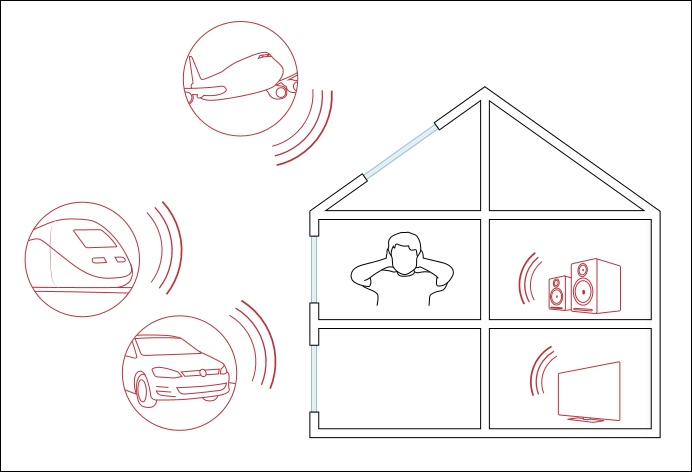
What is noise?
Noise is unwanted sound. In the home, this is any sound that distracts or disturbs the occupants.
This could be anything from nearby traffic or low flying aircraft to sounds coming from neighbouring properties such as music and loud conversation.
How it travels
Sound travels through the air (and solids and liquids) like the ripples seen on the surface of a pond when you throw a stone into it. Just like these ripples, the waves decrease in intensity as they move away from the source.
Sound intensity is measured in decibels (dB). A low dB value indicates a soft sound and a high dB value a loud sound.
How it affects us
The perception of noise will vary from person to person depending upon the source of the noise and the individual’s tolerance/acceptance of a given type of noise.
For example, a person living next to a busy road for a number of years may have become accustomed to it, whereas someone relocating from a quiet location to the same busy road may find the noise a nuisance.
How glazing can help reduce noise
One of the many potential benefits of replacing windows or installing secondary glazing in your home is that in doing so you can often also improve your property’s noise insulation.
The correct installation of good quality, well-made windows or secondary glazing systems can result in a noticeable reduction in noise levels.
Type of glass
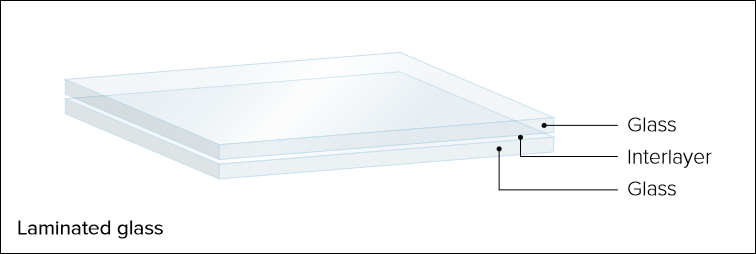
The type of glass used within your replacement window could have an effect on the level of noise reduction. Glass is available in a range of thicknesses and typically thicker glasses reduce more noise.
Domestic windows usually use 4mm-6mm thick glass. Some window panes are made up of two or more pieces of glass that have been bonded together; these are known as laminates. Specialist, acoustic laminated glass is available from many glass manufacturers.
Thickness of glass
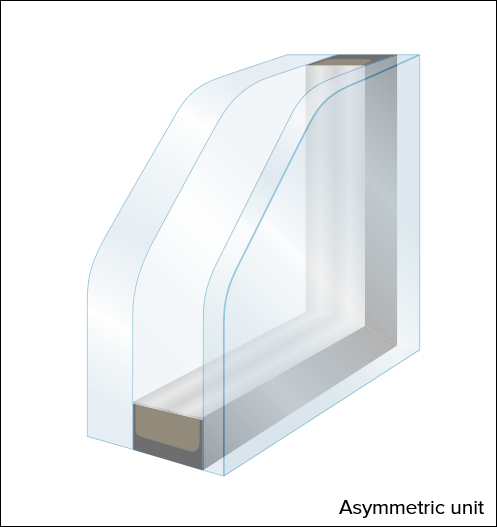
Different thicknesses of glass are effective at reducing noise at different frequencies. As a result, a sealed double or triple glazed unit with glass panes of different thicknesses (i.e. both 4mm and 6mm) will be effective at reducing noise across a wider range of frequencies than if both panes of glass were the same thickness.
Triple glazing
In addition to reduced thermal losses, triple glazed units can provide a reduction in noise. By increasing the combined thickness of the glass within the unit, the mass is increased. A reduction in noise transmission will result from this additional mass.
Air gap
The size of the air gap between the panes of glass in either a double or triple glazed window or a secondary glazing system makes a significant difference to the level of noise insulation. Typically a large air gap will improve noise insulation.
Secondary glazing
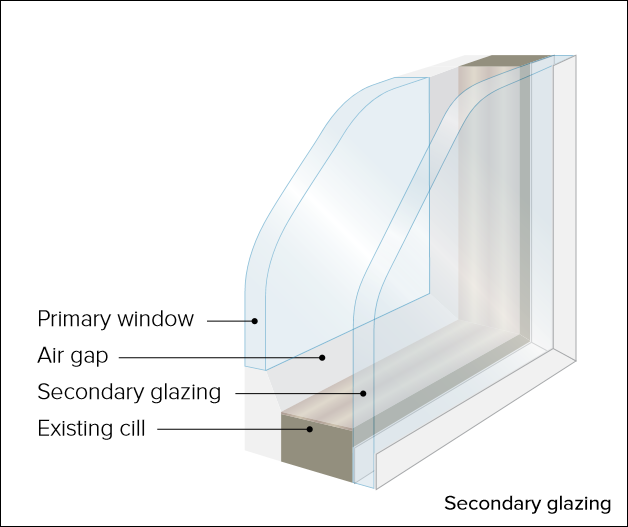
Secondary glazing is when another window or glazed screen is positioned within the window reveal of an existing window.
The extra glass pane and air gap now present in the window unit help to improve its noise insulation properties. In some cases, noise reduction can be further improved by lining the window reveal with sound insulation material.
The effect of ventilation and air gaps on noise reduction
To be effective in reducing noise new windows and secondary glazing systems must be fitted and sealed correctly. Any air gaps around your window will seriously affect its noise reduction properties.
It is also important that any opening window can be securely closed with a good quality seal. If the window does not close correctly noise will be able to infiltrate the property.
Bear in mind that many windows are designed to provide your property with a means of ventilation. Background ventilation through trickle ventilators can, if left in the open position, provide a passage for sound to travel.
Likewise, an open window, perhaps in the night lock position, will not aid sound reduction.
Glazing may only be part of the solution
Replacing or upgrading the glazed elements of a home may not singlehandedly solve the problem of excessive noise levels.
This is because noise entering the home via roofs, walls and floors will not be reduced as a result of changes to glazing. Depending upon the source of the noise and type of property, replacing or upgrading the glazing may only be part of the solution.
It is important to discuss your requirements and your expectations with the window installation company.
By explaining the source of noise that you are trying to reduce, the glazing company can advise you on what can be achieved.
The dB reductions possible using the various methods can be supplied by your glazing contractor. Any claim of noise reduction should be backed up by test evidence.
GGF Members will be able to advise you on the most suitable glazing option to reduce noise in your home – find a local GGF Member company.
What is secondary glazing?
Secondary glazing can provide a cost-effective and efficient way of improving the heat retention, sound reduction and security of your windows.
Secondary glazing involves installing a “secondary” window, i.e. a fully independent internal window, on the room side of your existing primary window.
Fitting an internal secondary window forms double glazing with your existing single glazed window. The secondary window is a separate unit consisting of a single glazed pane within its own frame and is fitted on the room side of your existing windows and sealed around the edges.
The range of secondary windows includes horizontal sliders, vertical sliders, top hung, side hung, double side hung, lift-outs, and removable fixed panels fitted onto the back of doors.
What are the benefits of secondary glazing?
Secondary glazing is a cost-effective way of improving heat retention and sound reduction in your home, as well as providing some additional security.
It can be a great less expensive alternative to replacing double or triple glazed primary windows.
Secondary windows units usually have separate handles and open so that you can get access to clean and open your primary windows.
Secondary glazing can result in significant cost savings
Secondary glazing is considerably cheaper and easier to fit than replacement windows because it doesn’t require complete removal and replacement of your existing windows.
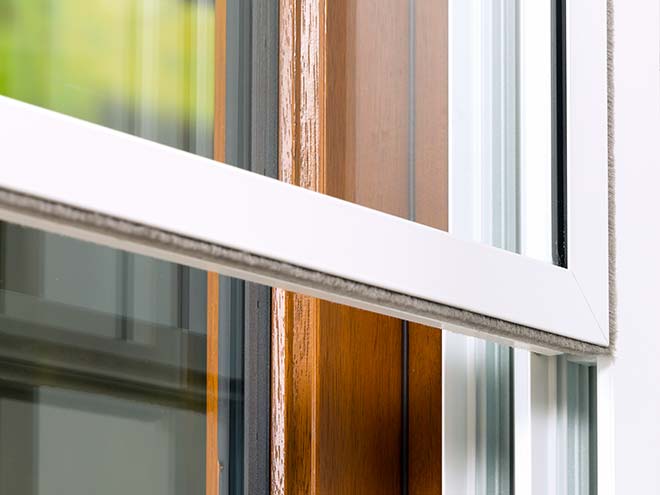
Heat loss is reduced with secondary glazing
A major long-term benefit of secondary glazing is heat retention properties. This is because it adds a second layer of glass behind your existing primary windows that reduce both the amount of warm air that can escape from your home and the amount of cold air that can enter.
The heat generated from your heating system will remain inside rather than escaping through inefficient windows, and there will be fewer draughts, making you feel warmer. Your heating bills could drop substantially as your home becomes more energy efficient, great for you and great for the environment.
Experience less external noise with secondary glazing
Secondary glazing also acts as an extra physical barrier against outside noise, reducing the amount of sound coming into your home through (closed) windows.
This noise reduction can be further improved by installing special sound-reducing laminate glass, or by having a gap of at least 100 mm between the secondary and primary window and lining the window head and reveals in between with acoustic tiles.
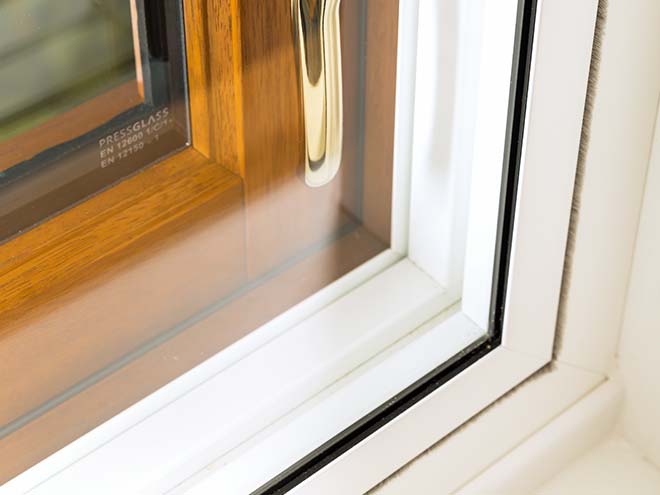
Extra protection for your existing windows
Secondary glazing means your existing primary windows do not need to be removed, and there are many reasons why you might need to retain your original windows.
This is particularly useful in listed buildings, buildings in areas where they are subject to an Article 4 Directive, and areas where planning permission rules do not allow any aesthetic changes whatsoever to the external primary windows.
These older properties are often draughty and adding secondary glazing that doesn’t require any planning permission may be the only effective way to reduce heat loss and improve sound insulation.
In other circumstances where windows cannot be replaced or where you don’t have the budget to replace them, secondary glazing can provide an alternative solution. It’s also a great cost-effective option for rented accommodation.
Secondary glazing is low maintenance
Secondary glazing is low maintenance and doesn’t cause the same level of disruption as fitting replacement primary double or triple glazed windows, and can last for many years.
Insulating Glass Manufacturers and Components Group
All About Secondary Glazing
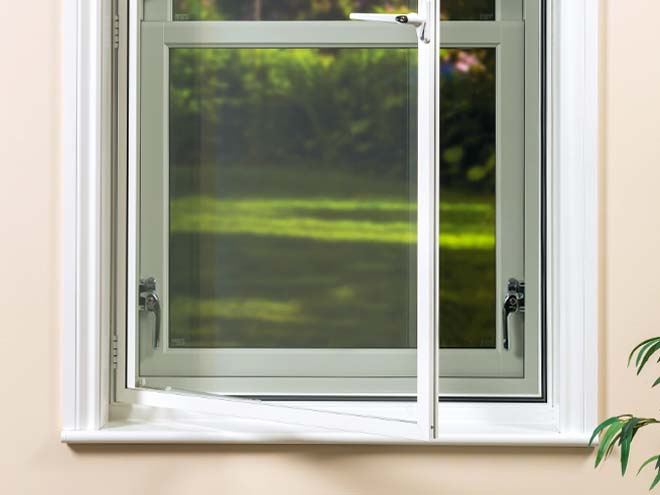
Following the Government’s inclusion of secondary glazing in the Green Homes Grant Scheme (launched 1st September), there have been many queries made to MyGlazing.com and the Glass and Glazing Federation (GGF) about the performance and qualities of Secondary Glazing.
Here’s the responses from the MyGlazing.com team in conjunction with the Glass and Glazing Federation and GGF Members Pilkington UK and Roseview Windows.
How does secondary glazing compare to replacing with windows for new double or triple glazing in terms of improving energy efficiency?
Secondary glazing when placed in close proximity to a primary window can offer good thermal improvements and increase your energy efficiency. If you live in a listed buildings often local council restrictions means that you can’t replace the original window design (and specification which is usually single glazed) with double or triple glazing so secondary glazing units can be a good alternative.
The energy efficiency performance is not as high as that of a full double or triple glazing replacement, mainly because of the huge advance in the quality of sealed insulating double and triple glazed windows and doors, however, secondary glazing can still be an effective solution.
One the most common ways of determining thermal performance in building materials is the U value, which measures how easily heat can pass through a material. Materials that allow more heat to escape from a building have higher (i.e. worse) U-values. Materials that let less heat pass through them have lower (i.e. better) U-values.
Solely based on glass U-values the table below is a reasonable measure of the difference on different window types:
| Glass type | U value (W/m2K) |
| Single pane | 5.7 to 5.8 |
| Single pane with secondary glazing (with 150mm air gap) | 2.9 |
| Single pane with Pilkington K GlassTM coated secondary glazing (with typical 150mm air gap) | 2.0 |
| Replacement double glazing unit with low E coating | 1.0 – 1.5 |
| Single pane with secondary glazing, glazed with double glazing slim unit with low E coating (not often used as cost is similar to standard double glazing) | 0.9 |
| Replacement triple glazing unit with two panes with low E coating | 0.5 – 0.8 |
The above table does not include the individual performance of frames, seals and insulation around the frames, the U values of the glass are based on typical performances.
Low emissivity (low E) coatings are microscopically thin, transparent coatings (much thinner than a human hair) that reflect long-wave infrared energy (or heat). So instead of heat escaping through the glass, a low E coating will reflect heat back into the home. In secondary glazing hard coat Pilkington K Glass™ is used to create the same effect.
The table shows the difference in thermal insulation from a single pane of glass through to a triple glazing unit with two panes of low E glass. As you can see the difference from single glazing with the addition of secondary glazing approximately doubles energy efficiency.
Many homeowners living in conservation areas and/or listed buildings who may be restricted by local authorities on installing modern home improvements, use secondary glazing as a solution to improve energy efficiency because once installed, it improves energy bills immediately. However, it is worth noting that installing double glazing or triple glazing does increase thermal performance even more significantly, by roughly 100% from secondary glazing.
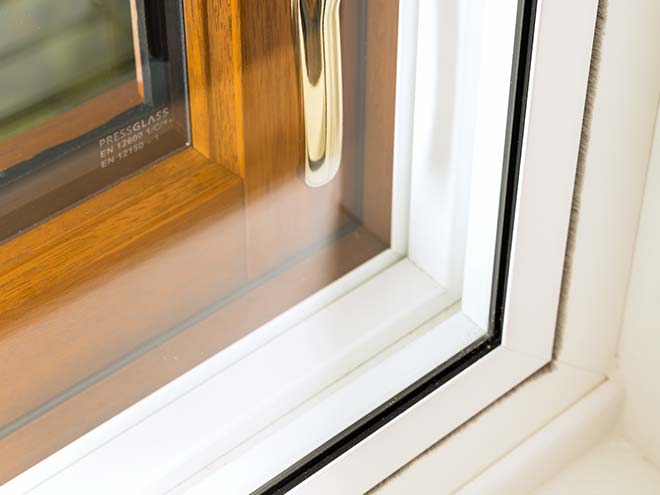
Secondary glazing can also effectively eliminate the draughts commonly found with old single glazed windows. Draughts aren’t directly measured by U value but they can of course adversely affect a building’s energy efficiency and the occupant’s comfort levels.
Being a less expensive option (approximately 50% less on a supply and install) Secondary glazing is often an easier or temporary solution for those homeowners who want to improve their energy efficiency but may not have a huge budget.
What is the average cost of secondary glazing?
Cost varies depending on the specification. Secondary glazing can be bespoke, coloured and shaped to suit the period properties they are found in. Designed to cover the existing window style and be hardly visible, the variation in styles these days includes fully tilt out to clean units. On average, a typical secondary glazing window/unit is around half the price of a double glazing window. The installation of secondary glazing is also better for acoustics, whether it’s keeping sound out or in.
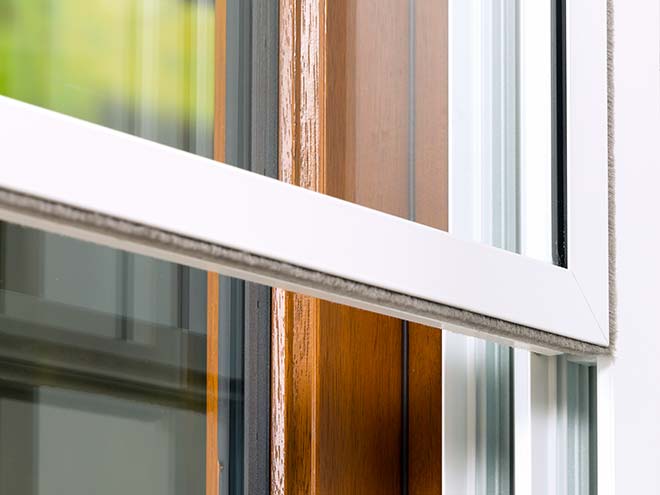
When would it be beneficial to use secondary glazing over replacement windows?
Noise prevention is one of the main benefits. Secondary glazing is used extensively throughout the country to combat noise pollution. It is often fully subsidised as part of government schemes to improve living conditions in particular situations such as airport flight paths and housing in proximity of railways or highways. The noise cancelling effects of secondary glazing are particularly impressive.
Secondly in conservation areas or listed buildings where restrictions are in place. Many older public buildings like museums, schools or town halls have secondary glazing installed because the owners or local councils may have to retain the external appearance of the building. Professionally installed secondary glazing is virtually invisible from the exterior of such a property and delivers the advantages of energy efficiency and noise reduction.
Secondary glazing also offers an added layer of security and the internal finishes that can be achieved with secondary glazing are now of such a high quality, they can be a real feature of the interior design.
What are the drawbacks of secondary glazing?
Secondary glazing is not as energy efficient as a new double or triple glazing windows, though it does improve energy efficiency where there are local council restrictions. One drawback that is sometimes mentioned is the maintenance and cleaning of secondary glazing. It can mean twice as much work when cleaning, especially when double and triple glazing can also feature self-cleaning glass. However, most modern secondary glazing panels are removable and the weight of a single glazed panel is much lighter to handle when doing so.
It has been mentioned that in some situations, secondary glazing can resolve a problem with condensation. Providing an extra barrier of glass can help regulate the extreme temperature clash of cold glass pane against warm centrally heated air though it should always be well ventilated to reduce the likelihood of condensation. Secondary glazing is not the best energy efficient glazing solution, because the seals are not as airtight as those on double and triple glazing. In addition, the thermal performance of secondary glazing is very much dependent on the condition of the prime single glazed window on a building’s exterior.
Video: See secondary glazing sound reduction demonstration.
The answers provided have been supplied by the technical team of MyGlazing.com and the Glass and Glazing Federation (GGF). The information has been corroborated with research, product testing and product data from GGF Members including Pilkington UK and Roseview Windows. Video courtesy of Roseview Windows.
Diamond Glass Ltd
Founded in 2001, Diamond Glass manufactures top quality flat glass products and we specialise in Sealed Double Glazed Units.
Through ongoing investment in up-skilling our team and in acquiring the state-of-the-art machinery and equipment, we have grown the business to become a leading provider of specialist glazing to the trade in Ireland and the UK.
Our depth of experience combined with our manufacturing capabilities has made Diamond Glass the supplier of choice, delivering quality products at excellent prices.
Tunbridge Wells Glassworks
Tunbridge Wells Glass Works is a local, family owned business dealing in glass, mirrors, table tops, traditional lead lights, replacement windows and doors and sealed double glazed units. The business was started in 1949 as a glass merchant and general glazing company, and has grown both in size and in its range of services.
We are still family-owned and we like to think that we still retain the old-fashioned ideals of quality and service that have always been so important to our customers.
- Glass & Glazing
- Replacement Windows
- Mirrors
- Leaded Lights
- Balustrades

 Emergency Glaziers
Emergency Glaziers GGF Shop
GGF Shop MyGlazing.com
MyGlazing.com Find a GGF Member
Find a GGF Member



